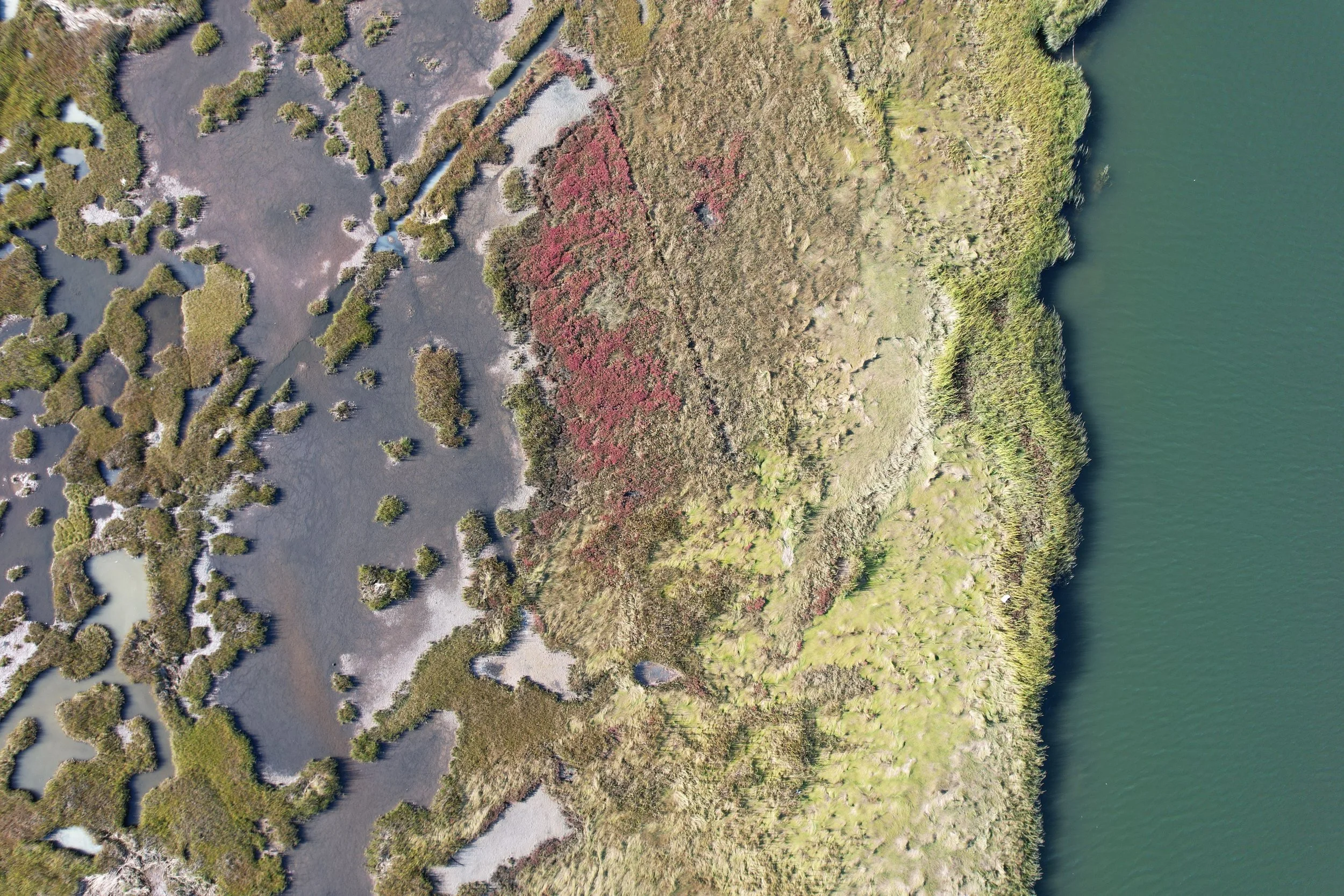Each fall, Rumney Marsh tells two very different stories in color.
Down in the flats, patches of glasswort turn bright red as the plants store salt and prepare for winter. This native species thrives in healthy tidal zones, and its color signals that salt water is still reaching the marsh.
Higher up, the highway embankment glows with orange and yellow trees. When this fill was first placed, there were no trees here at all, only bare soil cutting through the marsh. Over decades, seeds from nearby uplands took hold in the dry, compacted soil, creating a band of upland forest.
While those trees now shelter songbirds and small mammals, they also cast shade on the marsh edge, block sunlight for native vegetation, and change how rain and salt move through the soil below.
These autumn colors tell both stories at once: one of a natural system still pulsing with life, and another of how the marsh continues to adapt to the changes built into its landscape.
This fall, take a closer look. The forest may seem like a natural feature, but it will stand out once you know what to look for.







